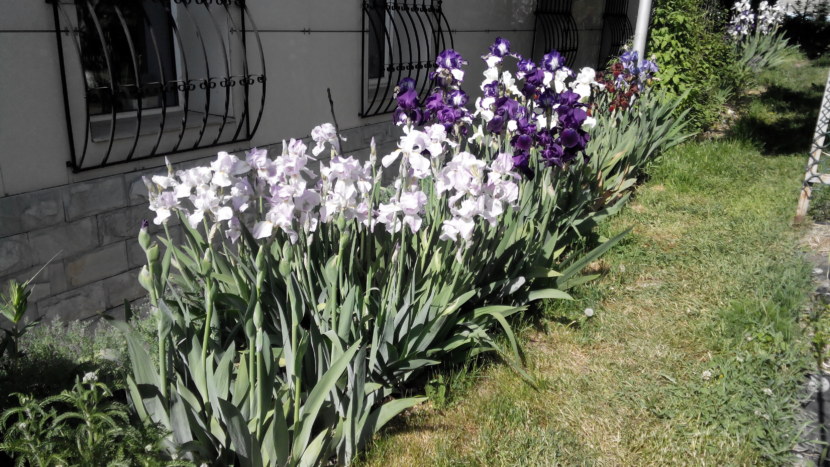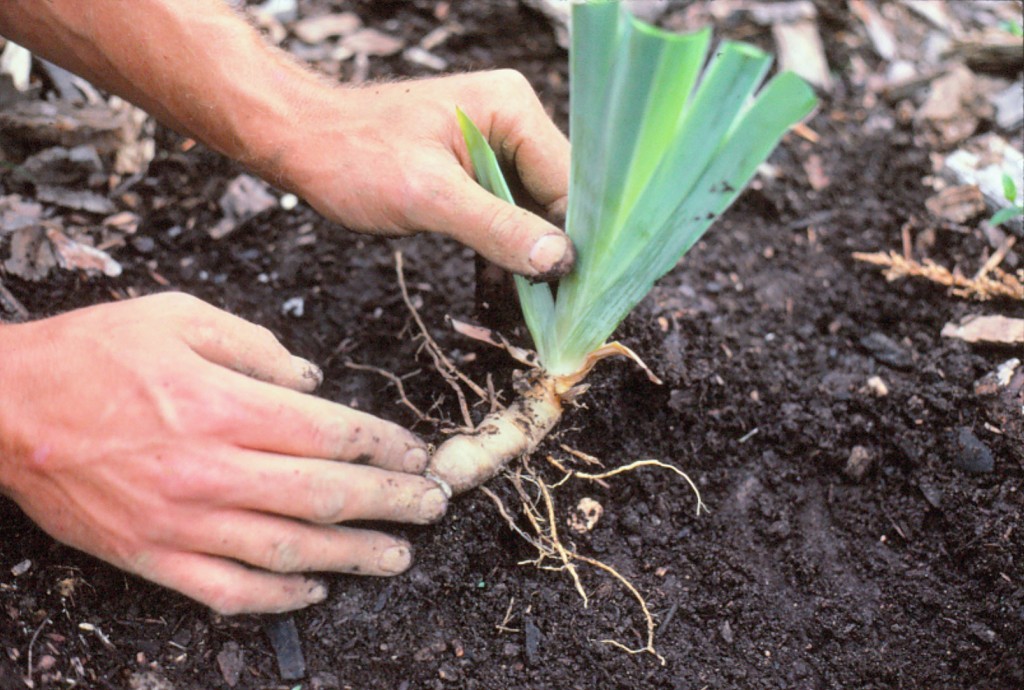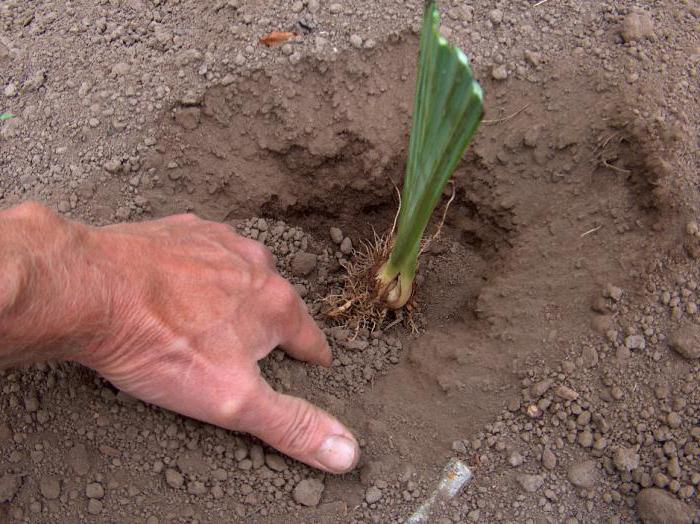Content:
Very beautiful perennials with erect flowers of various shades adorn the flower beds of many land plots throughout the summer. In one place, killer whales (as these plants are so affectionately called by the people) have been actively developing for 7 years. Then it is desirable to relocate them. When it is better to replant irises, what is the correct algorithm of actions, it is worth touching upon these issues in order to make gardening chores for beginners easier.
About leaving
Gardeners liked these flowers not only for their beauty and pleasant aroma, but also for their unpretentiousness. They do not require special care, tolerate droughts, do not like stagnant water and feel comfortable in flower beds in winter, despite the fact that the rhizomes are practically on the surface.
Weeding and loosening the beds with irises are carried out as needed. Iris whales do not need special nutrition - fertilizers are applied once a year, even on frozen ground after the snow melts. Additional feeding will be needed if the plant slows down in growth. But this usually occurs from the 3rd year, when the rhizomes grow significantly.
If you keep these flowers in one place for a long time, they not only become smaller, but also lose their quality, and also begin to hurt. Therefore, the optimal time for transplanting irises is from the 4th year of life. Otherwise, the old (dying off) rhizomes will clog the young, preventing them from developing.
When is it better to replant irises
The growing season for iris, depending on the variety, ends in mid-July-early September. This is the best time to transplant irises. True, some summer residents do not pay attention at the moment and divide the bushes in the spring. Someone, on the contrary, is attracted by summer (July-August), but experienced gardeners recommend choosing autumn.
Iris transplant in autumn
September is the best time to transfer irises to a new site. They quickly take root in the open field, winter well and, when spring comes, are ready to bloom.
Transplantation is carried out in compliance with the following rules:
- only bushes with a sufficiently developed root system need relocation;
- choose those shoulder blades that managed to separate from the mother bush and give good roots before the onset of cold weather;
- be sure to pay attention that the flower buds are already fully formed.
How to transplant irises correctly
Every gardener transplants irises when it's best for him. In any case, you need to follow certain rules:
- on the bushes selected for transplantation, the leaves are shortened by half the length, making a cut at an angle;
- rhizomes are dug up and cleaned of soil, too dirty are washed with water;
- rotted parts and dry foliage are removed; in this case, the rhizomes are kept in the Hom solution for 20 minutes and dried for 12 hours;
- when they divide the bush into parts, they make sure that on each division there are 2-3 nodes with dormant buds;
- cut the rhizomes only with a sharp knife;
- the places of the cuts are treated with wood ash or gray mixed with activated carbon;
- remove unnecessary roots;
- the layering is kept in a weak solution of potassium permanganate;
- planting material is dried on the bed, periodically turning so that the sun's rays touched each part of the layer.
The main methods of transplantation
- Complete digging of the bush - the whole plant is removed from the ground, the roots on it are shortened to 3 cm, the leaves are cut to 10 cm; after that, the bush is kept for 2 days and is also completely added in a new place (if the plant is not more than 4 years old), or it is dismembered into sections (old bushes);
- Partial - a dig is made under the bush, the required number of layers is cut off, which are seated in new places.
[
The new site where the planting will take place must be sunny - iris do not like constant shade. Be sure to take into account the location of groundwater - they should not be higher than one and a half meters.
Landing algorithm
- If the layers have different sizes, then a hole is dug out for the length of each root;
- A layer of earth mixed with fertilizers (potash or phosphate) is laid at the bottom of the depression;
- A small mound is formed;
- The root is set on a hill, slightly pressing into it;
- Sprinkle with earth so that the buds remain under a 2-centimeter layer of soil;
- Fresh planting is watered abundantly, if necessary, a small shadow is created for a while.
Placing iris blades on a flower bed, they try to maintain the vertical position of the leaves, focusing on the north. Then the roots will always be warmed by the rays of the sun.
Iris section - limyiris
The described technology is suitable for bearded killer whales. If representatives of the beardless group grow on the site, limyiris (Siberian, smooth, bristly, water), then here the following features are taken into account when transplanting:
- the layering after digging is not dried, the plant is transferred with a lump of earth;
- the holes are made deeper than that of ordinary irises;
- create shading in hot weather;
- watered abundantly throughout the season.
This species of killer whale is more often planted in the spring, although the planting material is collected in the fall and stored wrapped in moss.
Iris transplant in Moscow region and Siberia
Iris take root so quickly that the month is not so important for their planting. The main thing is to pay attention to the climatic features, as well as to choose drained soils with the presence of clay, ignoring sandstones.
In the Moscow region, in the Urals, in Siberia, they do not particularly ask themselves when irises can be transplanted from one place to another. For flower growers in these regions, each warm month is good for working in a flower bed.
Spring planting
It is better to prepare a new bed in the fall, digging up and adding compost, humus, a little lime and bone meal. The shrub can also be prepared from September. To do this, it is enough to cut off the new shoulder blades from the old rhizome and leave in place until spring.
As soon as the soil warms up to the desired temperature, young bushes are dug in and transferred to a new place of residence. In case of recurrent frosts, it is better to immediately sprinkle fresh plantings with sawdust for a while, so that the roots are not damaged due to temperature changes.
Summer landings
Those who decide to start breeding irises in the summer should start the procedure in the second half of July or in August, when the flowers on the bush will wither. The rules for preparing the site, planting material and the work algorithm do not differ from those described above, but there are small nuances:
- the new site intended for transplantation is watered abundantly a few days before the main work;
- the soil is loosened to a depth of 20 cm and nitrophoska is added (80-90 g / m2);
- the roots are buried in small pits just below the ground level;
- the direction of the fan of leaves is south, this will allow the plant to develop symmetrically;
- filling the hole, part of the scapula is left peeking out of the ground;
- water the plantings with warm water so as not to injure the plants by the temperature difference.
Landing in the fall
In cool regions, autumn planting is also practiced, the most suitable time for this is the first half of September. Transplanted iridescent whales need at least 2 weeks to have time to take root before frost, which occurs in Central Russia since October.
If irises are transplanted in the fall, the soil is dug up, but not fertilized - complex feeding is applied under the rhizomes in early spring. Sprinkling roots in the hole, a small "back" is left to look out on the surface.
When several shoulder blades are planted in one hole, it is better to place them around the perimeter of the circle. So it will be easier for young plants to winter. New plantings in October are sprinkled with leaves, and if winter is foreseen with little snow, then from November they are additionally covered with spruce branches.
If the cold weather comes earlier than expected, the bush can be divided into layers and planted in a greenhouse with light nutritious soil until spring. Or root it in flower pots with a substrate and plant it in a permanent place when the spring frosts pass.
Having decided on the time of relocation of flowers, having studied the information on how to transplant irises correctly, even a novice gardener can easily cope with this work and very soon begin to enjoy the beauty of his multi-colored flower bed.















